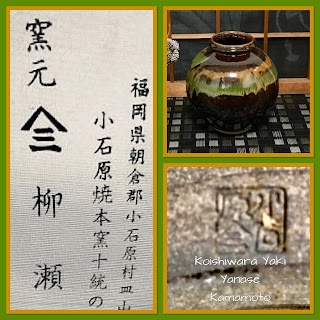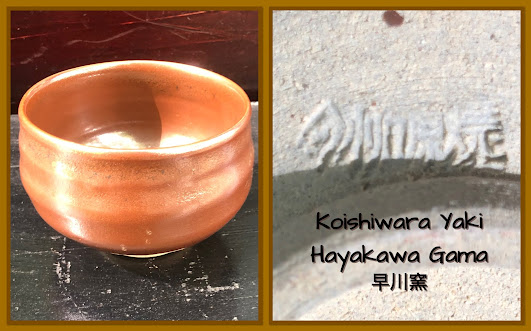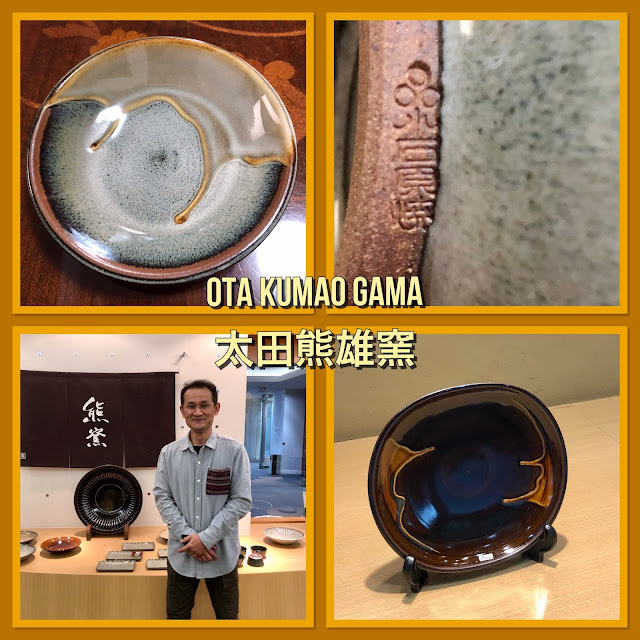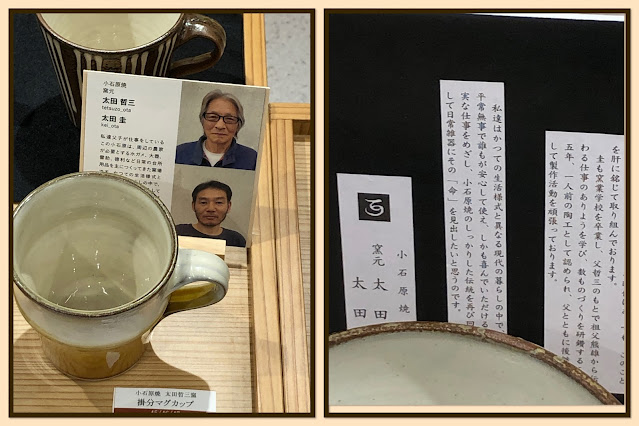Koishiwara Yaki (sometimes spelled Koishibara and Koishihara ) is wonderful traditional folk art from a small mountainous area in Fukuoka Prefecture.
To the left is the Koishiwara mark. To the right is the kiln mark which I think is the "Maruwa" mark which is a circle (maru) with the "Wa" character inside.
MARUWA Mark
Marudai MARK
Marudai MARK
Cups made for sale after the devastating floods in 2017 that wiped out most of the town in Koishiwara.
Made by the Kajiwara Family at Yamamaru gama.
http://en.toho-info.com/po_kama/k01_yamamaru.html
Although not a common glaze for Koishiwara yaki, this wonderful bowl is a favorite of mine. I had it for about 8 years before I discovered its origin.
Yanase Kamamoto
Although not a common glaze for Koishiwara yaki, this wonderful bowl is a favorite of mine. I had it for about 8 years before I discovered its origin.
Yanase Kamamoto
 |
| OTA MINORU GAMA |
UNMARKED ( many vintage are not marked)
General decorative techniques used in Koishiwara yaki include:
Chatter marks-Tobiganna
Brush marks-Hakeme
Combing-Kushime
Finger wipes-yubi-egaki
Dripping-Nagashigake
Splashing-Uchikake
Carmel glaze-Ame-yu Ame-yu
A form of Brush work (hakeme)
This Onta Yaki jar shows examples of chatter marks (tobiganna) and combing (kushime)
This example is Onta Yaki, they use the same techniques
*In several English language books on Japanese ceramics, Onta and Koishiwara Yaki, I noticed that the word Kasuri-mon was used for chatter marks along with Tobikanna. I don't know where Kasuri-mon came from as I cannot find it used that way in Japanese for other than fabrics. Tobikanna or Tobiganna is the only word used in Japanese that I could find.
Links:
http://koishiwara.jp/english/concept.html
http://nippon-kichi.jp/article_list.do?ml_lang=en&p=1353
http://www.koishiwarayaki.or.jp/kumiai/kama_04.html



































